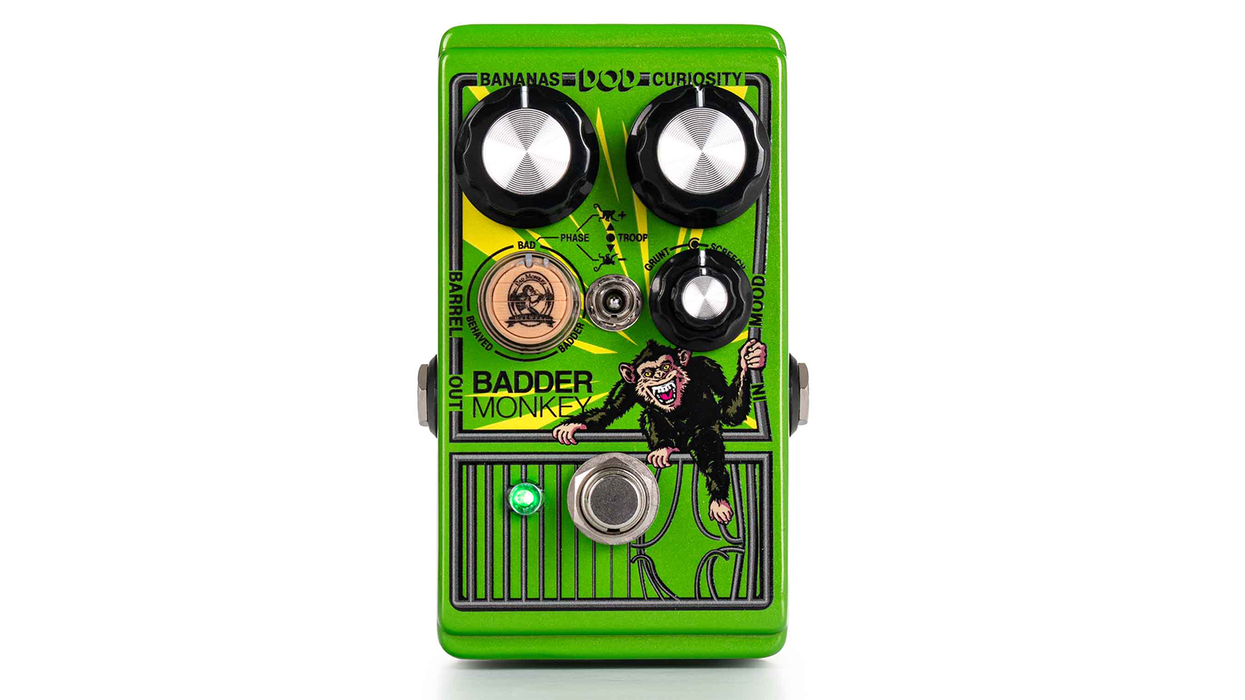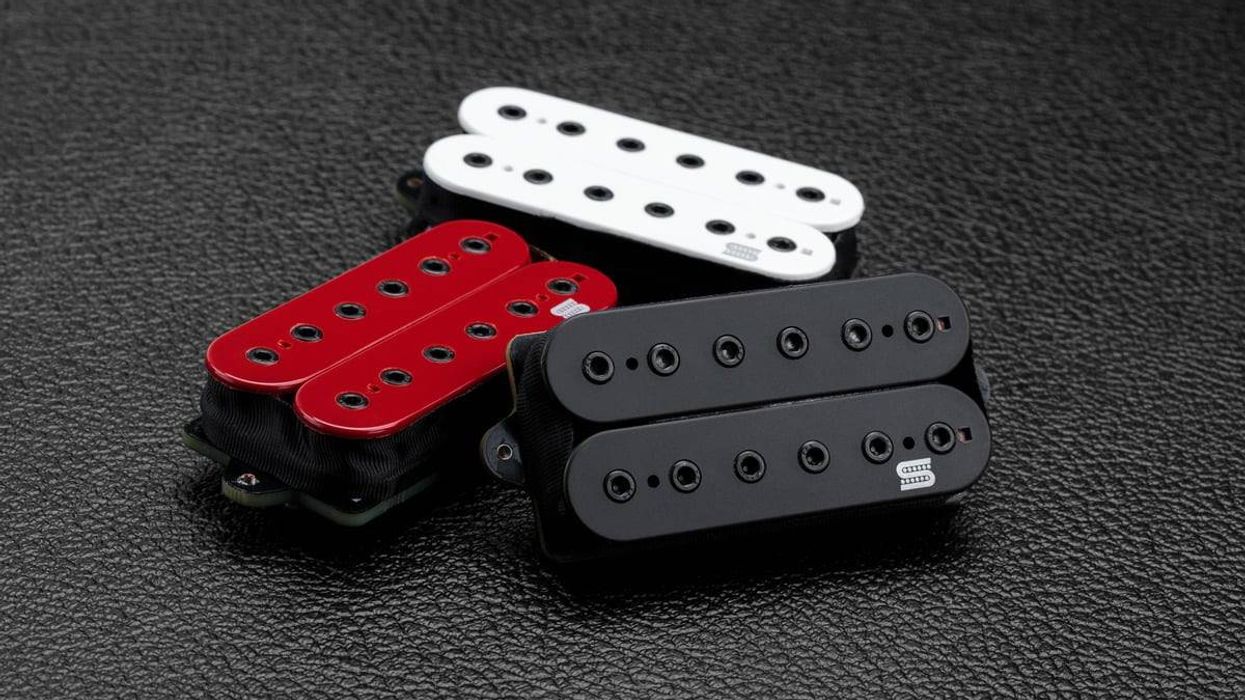 It’s no secret that electric guitarists are enamored with tradition, and it is certainly not an unfounded obsession. Some of the world’s most valuable guitars were crafted in a small historical window, dates that are endlessly debated but can be loosely defined as 1951 to 1964. These guitars were triumphs of technology and innovation, combining electricity and classic craftsmanship to create what many consider to be the perfect instruments. And while the science of electrified sound has come a long way since that humble, post-war decade, most players still lust after these classic slabs of wood, partly to experience a build quality that is rare today and partly because of the musical history they made (see: rock n’ roll).
It’s no secret that electric guitarists are enamored with tradition, and it is certainly not an unfounded obsession. Some of the world’s most valuable guitars were crafted in a small historical window, dates that are endlessly debated but can be loosely defined as 1951 to 1964. These guitars were triumphs of technology and innovation, combining electricity and classic craftsmanship to create what many consider to be the perfect instruments. And while the science of electrified sound has come a long way since that humble, post-war decade, most players still lust after these classic slabs of wood, partly to experience a build quality that is rare today and partly because of the musical history they made (see: rock n’ roll). But if electric guitarists are newly married to tradition, acoustic guitarists are celebrating their Golden Anniversary. For all of the popular history embodied in Telecasters and Les Pauls, the acoustic can claim a lineage running back hundreds, if not thousands, of years. And while the electric guitar has gradually evolved, introducing us to jumbo frets and 5-way switches, the acoustic has essentially stayed the same since Martin’s introduction of the 14-fret dreadnought in the 1930s. Sure, pickups eventually made their way to the acoustic and modern designs are generally easier to play than earlier models, but the woods are familiar, the bracing patterns are recycled and the soundhole is still smack dab in the middle.
That’s not to say that builders haven’t tried reinventing the acoustic – Babicz is regularly changing the face of the instrument and Boulder Creek Guitars went as far as eliminating the front soundhole altogether on their Solitaire series. Unfortunately, it never seems to stick – either the price is pushed through the stratosphere, or it comes off as gimmicky, whether it’s a fair assessment or not. It’s a fine, treacherous line for luthiers to walk, and judging by a majority of acoustics on the market now, it seems that most builders have become content to fall in line with the safety of tradition.
For the true believers of acoustic reinvention, McPherson Guitars has stepped up to the plate, building high-end acoustics with an eye towards slick, innovative design that doesn''t require a second mortgage. The MG 3.5, in particular, exudes a feeling of revolutionary thinking in its looks and curves – even the name sounds like a supersonic fighter jet. From the offset soundhole to the cantilevered neck, this acoustic feels like it was built for a select class of musicians who secretly knew what the acoustic was capable of all along.
"...McPherson Guitars has stepped up to the plate, building high-end acoustics with an eye towards slick, innovative design that doesn''t require a second mortgage."
Fortunately, the folks at McPherson realized that innovation is only worth a damn if it is coupled with a good foundation, and the MG 3.5 is no exception to the rule. Featuring a top of Engelmann spruce, back and sides of East Indian rosewood and an ebony fingerboard, this guitar has all of the credentials needed to hang with the most traditional acoustiphiles. The appointments are kept tastefully spartan, and match the company’s desire to let the guitar speak for itself. The only inlay to be found is at the head cap, where mother-of-pearl spells out McPherson in a flowing script. Flamed koa binding traces the guitar’s body, but is never too much; likewise, the gold Schaller tuners fit in perfectly with the MG’s regal-but-understated identity. Even the high-tech L.R. Baggs RTS 2 electronics are kept out of the way, with the only real sign of its presence being the tiny volume wheel residing inside the kidney- shaped soundhole. A single request would be the inclusion of some nondescript fret markers on the fingerboard, but that’s just because this reviewer tends to get lost easily.
Sound Improvements
While the MG 3.5 may have all of the elements of a traditional build, it quickly proves to be anything but. As you put your hands on the muted V-shaped neck, you immediately notice the guitar’s cantilevered neck design. Made of mahogany, and completely detachable – a move that is quickly becoming en vogue in the acoustic world - the neck hovers quietly above the guitar’s top, much like a classic archtop. It doesn’t take a genius to see the benefits of this design decision; by eliminating the neck’s connection to the guitar top, the top is allowed to vibrate more freely, resulting in a bigger, richer sound across the spectrum. The neck still feels solid as a rock and the unidirectional, high-modulus carbon fiber truss rod prevents any stability issues. Our model also shipped with one of the straightest necks we’ve seen around here in a while.
 Of course, that’s just one of three reasons that this guitar sounds as bold as it does. The bracings used on an acoustic guitar directly affect the amount of vibration a top can produce, directly and inescapably affecting a guitar’s sound. And while things haven’t changed much since Martin perfected the X-brace pattern 70 years ago, the MG 3.5 features the company’s “state-of-the-art” bracing pattern, which effectively increases the amount of vibration possible by the guitar’s top. And while it’s a claim that may sound based in marketing speak and the industry’s proclivity for exaggeration, a few strums prove that it’s not too far off.
Of course, that’s just one of three reasons that this guitar sounds as bold as it does. The bracings used on an acoustic guitar directly affect the amount of vibration a top can produce, directly and inescapably affecting a guitar’s sound. And while things haven’t changed much since Martin perfected the X-brace pattern 70 years ago, the MG 3.5 features the company’s “state-of-the-art” bracing pattern, which effectively increases the amount of vibration possible by the guitar’s top. And while it’s a claim that may sound based in marketing speak and the industry’s proclivity for exaggeration, a few strums prove that it’s not too far off. But perhaps the most noticeable of all the guitar’s idiosyncrasies is the offset soundhole. This is one attribute that you’ll either love or hate, as it definitely carries the guitar furthest away from the shores of tradition, but it quickly became a conversation starter shortly after my first strum. Residing in the voluptuous curve of the upper bout, the elliptical-shaped port eliminates the gaping hole right in the middle of a choice piece of wood, meaning that more of the top is free to vibrate. As an added benefit, with the soundhole moved upwards, you get more of the sound in your ears without the need for an obtrusive port on the upper bout.
So what are the sonic results of all of this scientific tinkering? I’ll avoid the much-abused artillery metaphors, but suffice to say this guitar sounds huge. The low-end erupts forth from the MG 3.5 with a sense of purpose, thickening up your sound without losing definition – I had an absolute blast pounding out descending bass lines while strumming through several Paul Simon-approved pop tunes. No matter how much I laid into the McPherson, it produced tight, powerful chords. My first recommendation with this guitar would be to hit an open E chord and just listen – there’s a richness and complexity to the sound that would make this great in the studio.
But the MG 3.5 certainly shouldn’t be construed as a one-trick pony. With the top’s movement maximized, the entire tonal range is enhanced, giving this guitar a sense of balance that you normally don’t find in larger-bodied acoustics. There’s enough responsiveness and sonic agility to make this a great fingerstyle guitar, and the MG’s dynamic range is remarkable. If there ever was a do-it-all acoustic, this very well might be it.
In terms of playability, the McPherson has a 25 1/2” scale, has a fairly high action (3/32” at the low E; 5/64” on the high E) and ships with medium gauge Elixirs – all of which contribute to the guitar’s big sound but also make it slightly tough to wrangle for extended periods of time. For those who’d like a little lower action, each McPherson ships with three different saddles, enabling you easily change the guitar’s feel without a trip to the local luthier. With a standard nut width of 1 3/4” and a width of 2 5/32” at the 12th fret, there was plenty of room to play, although a wider 1 7/8” nut is available for those who really want room to stretch out. Additionally, the use of Buzz Fieten’s intonation system means that every note you hit will sound great.
The Final Mojo
While tradition is certainly an admirable thing to uphold, a little change never hurt anybody – McPherson’s MG 3.5 harnesses the power of innovation to create a better acoustic. When you include the guitar’s transparent L.R. Baggs electronics and the custom Ameritage case it comes in – complete with a humidity control system itself worthy of a full review – you’ve got a real value that cannot be understated.
Buy if...
you''re looking for your "last" acoustic.
Skip if...
change freaks you out.
Rating...
MSRP $4400 - McPherson Guitars - mcphersonguitars.com |
Our expert has stated their case, now we want to hear yours. Log on and share your comments and ratings.






![Rig Rundown: Russian Circles’ Mike Sullivan [2025]](https://www.premierguitar.com/media-library/youtube.jpg?id=62303631&width=1245&height=700&quality=70&coordinates=0%2C0%2C0%2C0)

















